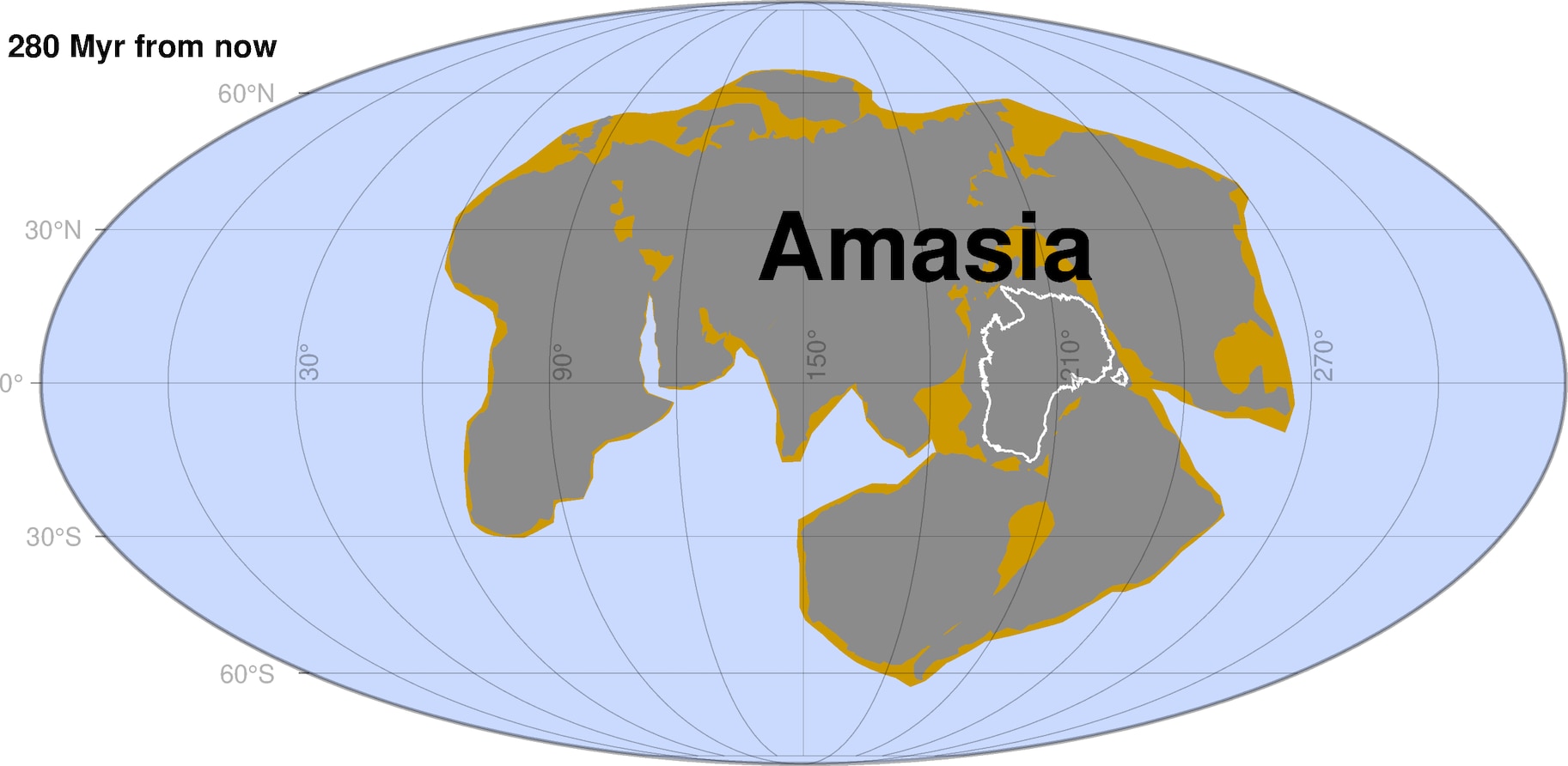Create a free profile to get unlimited access to exclusive videos, sweepstakes, and more!
Asia, Australia & the Americas on a collision course to become a supercontinent in 280 million years
Like a slow moving runaway train.

In Dante’s Peak, unexpected tectonic activity results in a massive volcanic eruption which threatens the lives and livelihoods of the people living nearby. It’s the perfect setting for a story in which there is no villain except for nature itself. Volcanoes and earthquakes are periodic reminders that the ground beneath our feet is alive with motion and ever-changing. While earthquakes and volcanoes wreak havoc on environments when they strike, there’s a slower moving and more insidious natural disaster in the making.
For billions of years the face of our planet has been in flux. The continents, once bound closely together in the supercontinent Pangaea, have slowly, millimeter by millimeter, been moving away from one another. The whole of human history has carried on during only a fraction of the time since last the continents touched. On a spherical world, however, a continent can only go so far before they start coming back together.
Supercontinents have occurred throughout our planet’s history on a relatively regularly cycle, appearing roughly every 600 million years ago. It has happened at least three times. The oldest known, called Nuna, formed between 1.3 and 1.6 billion years ago. Between 700 and 900 million years ago there was Rodinia; and the most famous supercontinent of them all, Pangaea, formed between 170 and 320 million years ago. That means we might be entering the tail end of our separation and headed toward a big continental family reunion. The question for us is how that is likely to happen and how it might affect the comparatively frail plant and animal species who call this planet home.
Zheng-Xiang Li is one of three authors on a new paper, published in the National Science Review, which sought to model the movements of Earth’s tectonic plates into the future and predict the arrival of the next supercontinent.
“We designed a spherical Earth-like system using supercomputers, mimicking Earth’s internal structures, properties, and processes such as plate tectonics and mantel convection. We then conducted a series of model simulations to see what factors might control the way a supercontinent forms,” Li told SYFY WIRE.
In essence, in order for a supercontinent to form, one or more oceans needs to close up. But there are numerous ways that could happen. When Pangaea was around, it was surrounded by a global ocean, the remains of which are the modern Pacific. As the continents split apart, the Atlantic and Indian oceans formed in the newly created gaps. It’s possible that the next supercontinent could form by turning back the geological clock and closing those relatively new oceans, but that’s not what the models suggests.
The models show that the strength of the oceanic lithosphere — the 100 kilometer thick shell under the oceans — is the biggest influence on how supercontinents form. Looking back to Rodinia, nearly a billion years ago, researchers found that a weakening of the lithosphere prevented the closure of internal oceans like the modern Atlantic and Indian oceans. That weakening continues today, driven by the overall cooling of the planet’s interior. That suggests that closing the interior ocean to reform the planet is a no go.
“The model outcome turned out be a bit of a surprise to us… the result predicts that the future supercontinent could only be formed by closing the Pacific Ocean,” Li said.
If that’s the case, then in a couple of hundred million years, the Americas, Australia, and Asia will crash into one another and form a new supercontinent and a new world ocean. Because of the way the supercontinent is predicted to form, researchers have named it Amasia.
When that happens, the world is going to be dramatically changed and not just by the shifting or rearranging of borders. Having all of the land masses grouped together is likely to have a significant impact on the type and diversity of life on our planet.
“With the dramatic change of global paleogeography during the assembly and break of a supercontinent there are always major changes in climate and environment… In general, the formation of a supercontinent would lead to a lowering of seal level, reduced biodiversity, and a high proportion of arid land over the vast supercontinent interior,” Li said.
It turns out, we’re lucky to live in the world as it is organized today. It’s likely we wouldn’t have a good time of it if we lived on a supercontinent and might not have ever gotten off the ground, or out of the trees, as a species. Luckily, the formation of Amasia is a problem for the future... and one we can’t do much about in any case.


























